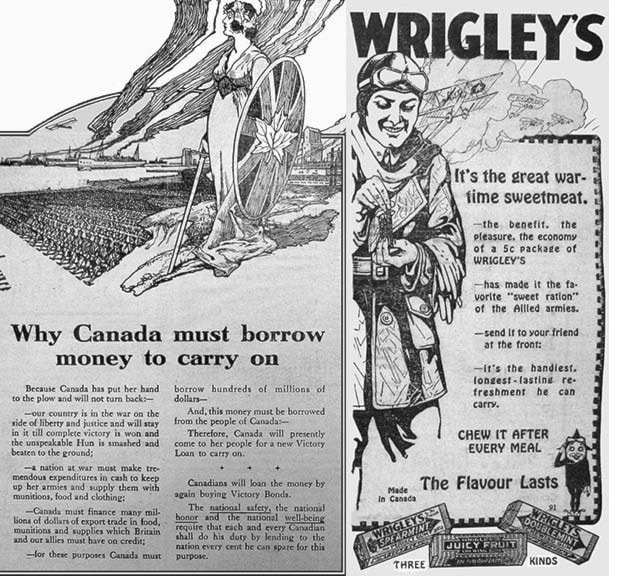Jim Cameron
Cranbrook was in the middle of a Victory Bond drive in the final month of the final year of the war.
By the first week of November 1918, local citizens subscribed over $100,000. A $50 bond would buy 1,400 rifles cartridges or 100 hand grenades or 10 gas masks or 50 pair of soldiers' socks or 10 pair of soldier's boots. It would pay one soldier for forty days or feed 100 soldiers for forty days or pay Canada's war bill for four and one-third seconds.
The bond drive began in early October; just about the time that army engineer Harry Deacon succumbed to illness at Montreal.
Harry was 27 years old, a resident of Cranbrook since he was twelve. He enlisted with the Canadian Engineers in July 1917, but he, as with many casualties of the war, never reached the line of battle.
The funeral was held at Macpherson's funeral parlour next to city hall, and the Last Post played over his grave by returned bugler ex-Sgt. Richardson.
Lt. Murray Howard, a pilot with the Royal Air Force, died from injuries sustained in a dogfight over the fields of France in early autumn. While on squadron patrol he engaged two enemy scout planes, shooting both down.
He was then attacked by two others and shot through the back from beneath. He managed to land in safe territory but died in a casualty station shortly thereafter. He is buried in the British Cemetery near Pernes, France.
Lt. Frank Wilson died leading his men in battle on Sept.24. He was promoted to Captain the next day.
Jerry McGregor, a popular young man of the community was killed in action in late October, yet another name to be inscribed on the original "Heroic Dead" memorial on 10th Avenue.
Some good news arrived from overseas. Lt. Eugene Phillips, age 22, was awarded the coveted Military Cross for conspicuous bravery on the field of battle earlier in the year.
The London Gazette reported, "This officer displayed great dash, courage and enterprise in patrol duty on four different nights, securing valuable information and harassing and inflicting casualties on the enemy.
"On one night he pushed forward with a small patrol in the bright moonlight, engaged an enemy wiring party with Lewis gun fire and killed six or eight and wounded others.
"Pressing forward he was engaged by three enemy machine guns, one of which he silenced with bombs and withdrew without casualties."
Perhaps, in some small way, it balanced the scale of war for the Phillips family.
Eugene's brother, Lt. Sperry Phillips, lost his leg in combat on March 28, 1916. Following a lengthy recovery period he returned to his parent's home on 7th Avenue in January 1918, receiving a hero's welcome.
On August 12, 1918, Eugene suffered a bullet wound in the shoulder from a German sniper.
The report of Lt. Phillips' wound came days before the more tragic news of the death of Private Stewart Morris in England from meningitis.
In January, Stewart and a group of friends were sledding on Fink Hill (named for the Fink residence on the corner of 11th Street and 2nd Avenue), a popular winter activity for many of the boys who went off to fight.
Stewart was very well-liked in the community. His obituary noted: "Stewart was a great big rawboned husky good natured fellow. One would have thought that his splendid physique could have withstood the ravages of any disease."
He was sledding in January, enlisted in April and was dead by August.
It all came to a close on a cold November morning. The Armistice was signed at 5 a.m., with the agreement that all fighting would cease six hours later.
Word soon reached the larger cities and the festivities began, spreading across the Allied nations.
By the evening, Cranbrook was decorated in banners and bunting, the local Herald newspaper published an extra edition and, at 8 p.m., November 11, 1918, bells began to ring, whistles to blow and sirens to sound.
A procession formed to the call of bugler Richardson at the old court house on the east end of Baker Street. Headed by returned veterans under a billowing Union Jack flag and followed by every fraternity, lodge, political institution and automobile in the city, the parade moved along Baker Street to the CPR station where a huge bonfire was lit and the German Kaiser burned in effigy.
Three cheers were given, God Save the King was sung and the crowd dispersed to begin their new lives.
It was a bittersweet celebration, of course, the deaths of so many local boys neither quickly nor easily forgotten.
Shortly afterwards came the news that Lt. Eugene Phillips had been killed in action earlier in the month.
Although people in town assumed he was still recovering from his bullet wound, he had, in fact, returned to his unit when he was killed on November 1, 1918, the last local boy to die in the war, it would seem.
For many of the Cranbrook boys it turned out to be a short walk from their house to their memorial.
The carnage was not truly over, however, for although the Armistice halted the relentless mortality rate of the war, at home the locals were, to put it bluntly, dropping like flies.
Next week: "It Was the Best of Times; It Was the Worst of Times."
